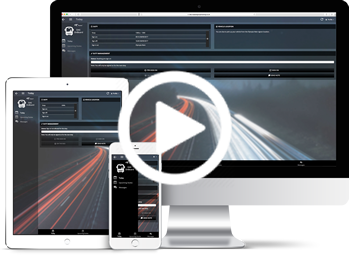Trapeze – Supporting the Switch to Electric Vehicles
In 2022, the UK government made a pledge to deliver 4,000 zero emission buses by the end of 2024. The new Electric Vehicle (EV) fleet will allow passengers to take greener, cleaner bus journeys. With 26% of 2019 greenhouse gas emissions generated in the EU stemming from the transport industry, it’s clear that the switch to zero emission buses can’t come too soon.
A fuel-powered bus produces, on average, 1.3kg CO² per km. Buses in England alone travelled 1.544 billion km in 20/21 – that’s over 2 billion kg of CO² produced in just one year. Even when you consider the environmental impact of building these buses, electric power has a significantly lower carbon footprint.
Trapeze is committed to supporting the provision of these new buses through effective implementation and seamless integration of technology solutions across planning, scheduling, monitoring and control via enhanced Intelligent Transport Systems (ITS).
Recognising that predicting and monitoring the state of charge of Electric Vehicles is complex, Trapeze has expanded its ITS solution, enabling authorities to access an integrated, user-intuitive dashboard which consolidates all available existing and future telematics data from all buses and chargers.
The EV ITS solution collects live battery consumption data from all Electric Vehicles in operation, and then, using additional data, such as forecasted travel time, expected passenger load levels, and external factors such as weather conditions, to predict the remaining range for each vehicle. The system will then calculate whether the remaining battery charge for each bus is sufficient for the intended route – raising an alarm if additional charging is needed.
The key input is of course the current State of Charge (SoC), which will be read from the CAN FMS interface, and forwarded at a high frequency to the back office as a basis for the battery predictions.
In addition to the on-bus data and battery prediction, the system displays the supplied charging stations on the GIS of the Service Controllers, plus, if available, the status of the charging points. This supports the service controller to take the right decision in cases a vehicle is predicted to go below the threshold.
Smart charging also enables control centre staff to monitor and manage charging sessions via Cloud-based tools, so they can control when, for how long, and how fast each vehicle charges. This makes it possible to increase the efficiency of charging infrastructure and significantly reduce energy costs.
These new monitoring and control facilities are essential for coping with disruptions to planned operations, for example if a vehicle arrives late at a charging point, misses a charging point due to a detour, visits the wrong charging point; or if charging points fail altogether.
Where issues arise, dispatchers have a range of functions at their disposal to maintain operations. Alarms can also be made available to third-party systems via an external interface. In such instances, dispatch actions are required to alter the plan.
Finally, all monitoring data, including onboard temperature, passenger loading and speed profile on the route, is recorded and fed back into route design for ongoing schedule optimisation.
By delivering the software to support the switch to EVs, we are enabling passengers and operators to both take and deliver more sustainable journeys.
Get in touch with us today to discuss your Electric Vehicle needs.
Here to help
Contact us and speak with one of our specialists:
+44 (0) 808 281 1039
More Info
About Us | Careers | Contact Us | Legal | Privacy
Trapeze Group respects your privacy

